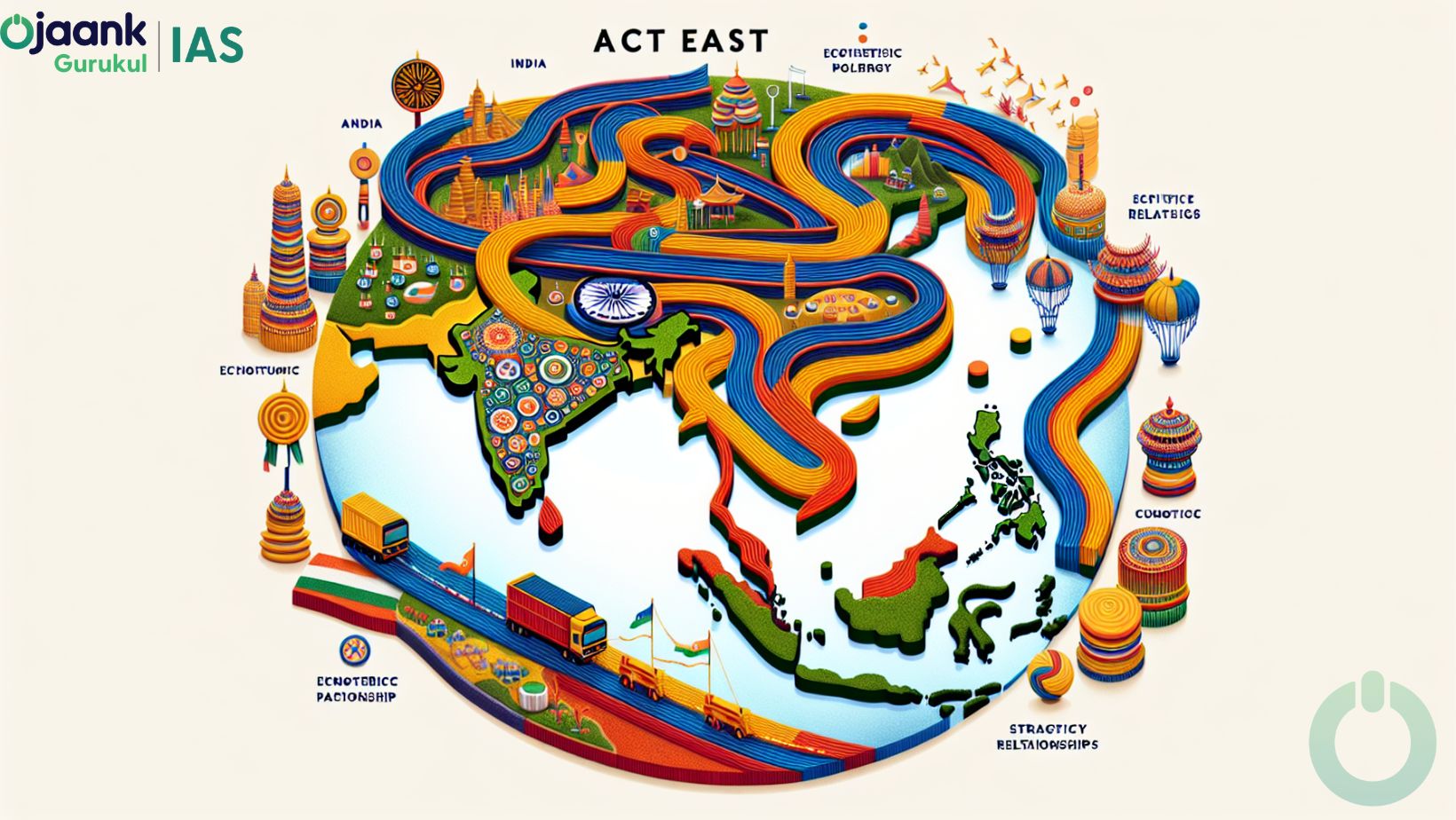How India's Bold 'Act East' Policy is Shaking Up Southeast Asia and the Indo-Pacific !

1. What is the difference between India's 'Look East' policy and 'Act East' policy ?
India's 'Look East' policy focused primarily on enhancing economic and cultural ties with Southeast Asia. It was more of a passive approach, emphasizing engagement from a distance. In contrast, the 'Act East' policy is a proactive and strategic approach aimed at strengthening not only economic and cultural links but also strategic and security partnerships with countries in Southeast Asia and the Indo-Pacific region.
2. When did India transition from the 'Look East' policy to the 'Act East' policy ?
The transition occurred in 2014, with the formal adoption of the 'Act East' policy during the tenure of Prime Minister Narendra Modi.
3. What prompted India to shift from the 'Look East' policy to the 'Act East' policy ?
The shift was driven by a need to address growing strategic and security challenges in the Indo-Pacific region, particularly in response to China's increasing assertiveness. The 'Act East' policy aimed to enhance India's role and presence in regional security and strategic affairs.
4. What are the key objectives of India's 'Act East' policy ?
The key objectives include strengthening strategic, economic, and cultural ties with Southeast Asia and the Indo-Pacific region, enhancing regional security cooperation, and countering the influence of other major powers like China.
5. How has the 'Act East' policy impacted India's relationship with Southeast Asian countries ?
The policy has led to deeper economic cooperation, increased strategic partnerships, and enhanced cultural exchanges between India and Southeast Asian nations. It has also resulted in more frequent high-level visits and collaborative initiatives.
6. What role does cultural heritage play in India's engagement with Southeast Asia ?
Cultural heritage, such as the influence of the Ramayana tradition and historical connections through empires like the Chola and Kalinga, forms a significant part of India’s engagement strategy, fostering a sense of historical and cultural continuity with Southeast Asian countries.
7. How does the 'Act East' policy align with India's broader strategic interests in the Indo-Pacific ?
The 'Act East' policy aligns with India's strategic interests by strengthening its geopolitical presence, promoting maritime security, and countering China's regional ambitions. It also supports India’s goal of becoming a leading player in regional security and economic forums.
8. What is the significance of the upcoming Prime Minister's visit to Southeast Asia in the context of the 'Act East' policy ?
The Prime Minister’s visit signifies India's ongoing commitment to enhancing its strategic, economic, and cultural ties with Southeast Asia. It is a demonstration of the proactive nature of the 'Act East' policy and a reaffirmation of India's dedication to regional partnerships.
9. How did Cold War dynamics affect India’s earlier engagement with Southeast Asia ?
During the Cold War, Southeast Asian countries were largely aligned with the US-led SEATO alliance, and India's engagement was more limited. The focus was less on strategic partnerships and more on economic and cultural interactions within the constraints of Cold War geopolitics.
10. What future developments can be anticipated in India's 'Act East' policy ?
Future developments may include deeper strategic alliances, increased economic collaborations, and enhanced regional security cooperation. Continued engagement with regional partners and adaptive strategies to address emerging geopolitical challenges are expected.
By Ojaank Sir